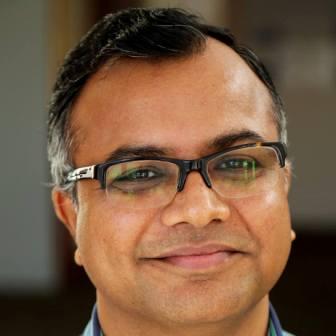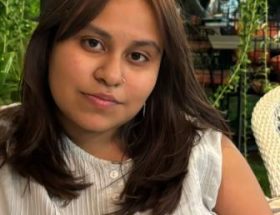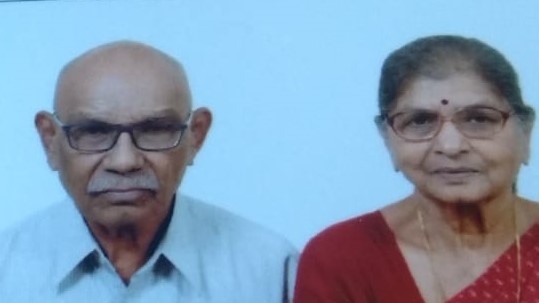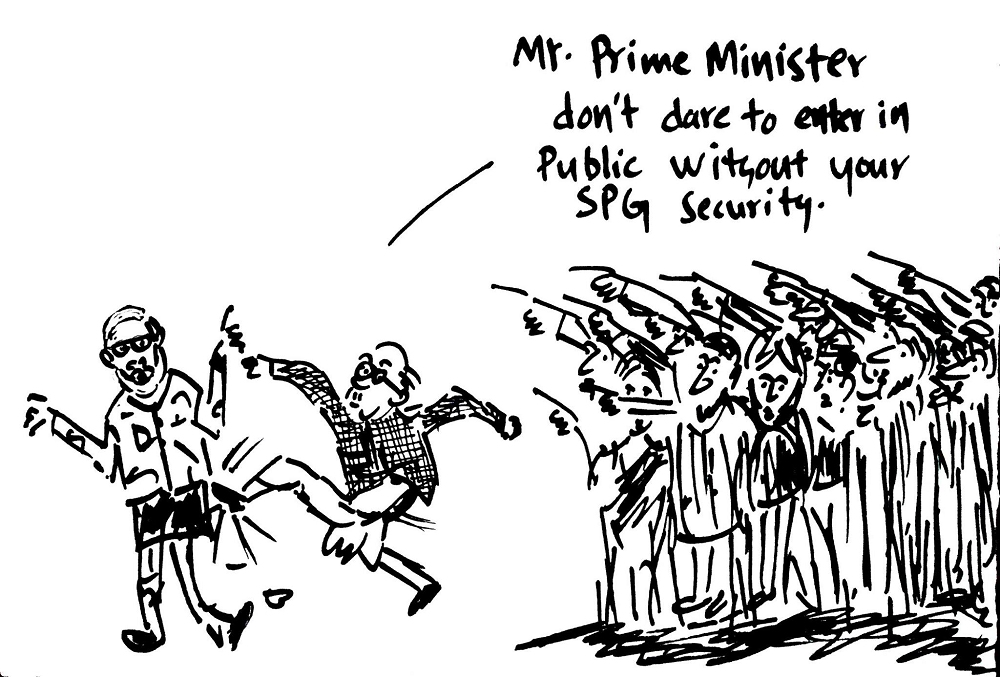Tanoj Meshram
 (The Maharashtra assembly, on the initiative of its speaker Mr. Nana Patole – who is also an important OBC leader of the Congress in Maharashtra – has passed a resolution on January 08 demanding caste census in 2021. This development has once again raised expectations of anti-caste activists and started the discussion in social media about the need for a caste census. It is in this context that the following article – which is an edited and translated transcript of an old speech given at BAMCEF National Convention, held at Nagpur from December from 25 to 28, 2015 – which raises some important issues about the caste census and counting of OBCs and the faulty implementation process of Socio-Economic Caste Census (SECC) is being published.)
(The Maharashtra assembly, on the initiative of its speaker Mr. Nana Patole – who is also an important OBC leader of the Congress in Maharashtra – has passed a resolution on January 08 demanding caste census in 2021. This development has once again raised expectations of anti-caste activists and started the discussion in social media about the need for a caste census. It is in this context that the following article – which is an edited and translated transcript of an old speech given at BAMCEF National Convention, held at Nagpur from December from 25 to 28, 2015 – which raises some important issues about the caste census and counting of OBCs and the faulty implementation process of Socio-Economic Caste Census (SECC) is being published.)
Dear Friends,
We now are living under a BJP government and many people believe that the UPA government was better than the current government. It was the UPA government which had given an assurance of conducting the caste census. Congress has ruled this country since 1947, with the exception of two or three governments. However, even though the need for having a caste-based census was repeatedly brought up, they never took this seriously. In fact, the honourable home minister whose ministry was in-charge of implementing this caste census was himself against the idea of conducting a caste census. Both current and previous home ministers, P. Chidambaram and Rajnath Singh have been against this and they expressed this not just in internal party forums but also publicly. However, some allies of the Congress government demanded that caste census be conducted before the 2011 census of India and organizations like BAMCEF had been demanding this for a long time. Babasaheb Ambedkar in his article “From Millions to Fractions” had also emphasized the importance of the caste census. Literature at the international level about the relationship of identity and census says there that a census plays an important role in construction of social reality and collective identities (like that of OBCs in India) in the way that a map is essential to understand the geography of a nation.
The ruling class of this country knows the importance of the census. Even though you may not know its importance, they do. In the first caste-based census which happened in 1911 it was found that in this country the so-called upper castes are in a minority and those who are currently called Bahujans (in those times they were called non-Brahman, Untouchables, Adivasis) are in majority. Around the same time, there was a movement for universal adult franchise going on in Europe. And in 1917 when the Montague-Chelmsford reforms for gradual devolution of power came, the so-called upper castes in this country realized that at some point in the future the British would be leaving India and at that time if universal adult franchise is implemented then what would happen? They realised that it would not be possible for them to become the ruling class based on their own current identity and politics. This realization came to them through the results of the first census. And it was after this that you will notice that they took up another identity; they started using the term “Hindu” more frequently and in a widespread manner. Thus, we find that the caste census of that time established who is a majority and who is minority and forced the so-called upper castes to switch to majoritarian “Hindu” identity. It is important to note here that V D Savarkar’s “Essentials of Hindutva” which inspired this new found identity movement was written around 1921-22 and published in 1923.
This is a historical lesson the ruling class has learnt about caste-based census and that’s why they oppose it. In my opinion, census is important in two ways. It has a socio-political significance. It can play an important role in helping people to organize politically. When people realize that there is strength in numbers, that their collective identity is being recognized, that their existence is getting recognition this has a very significant impact. On the basis of this social movements can be created. In the current census scheme the OBCs are not getting this recognition.
The second way in which the census is important is in terms of policy making. In the policy-making literature a frequently used term is evidence-based policy. If you do not have adequate and correct information about the population for whom you are making policies, then those policies will not be good policies. In the first semester of my doctoral studies I was doing research on the representation of Bahujans in the field of educational decision making and it brought out an example of how data not being available can create problems. My plan was to analyse the presence SC/ST education officers in each district of the country and its correlation with the learning levels of SC/ST children in each district (based on Annual Status of Education Report-ASER data which tells the percentage of children in Class 3 who can read a Class 1 textbook). For this research I needed to know the learning levels of SC/ST children in the district. However, in India the data on learning levels is not disaggregated on the basis of caste. Similar is the difficulty in getting information about proportion of SC/ST officers in the districts over a period of time. Such data is not available. This is a big problem in India. Any data which is collected, with the exception of NSSO data, one does not find caste a variable in that data. You can see in the US that health data is available in terms of race; you can find out whether more black people are dying than white people in the hospitals. In India, SC/STs who are admitted to hospitals and may be having a higher mortality rate but you can’t find out about this because no such data is available. Caste as a variable is not captured in India’s accounting system. And this happens deliberately. This is because if the data on this variable starts getting captured then there will be research on these issues. It will become clear on the basis of data that government policies are not being implemented properly and or they are not benefitting the so called lower castes. Therefore, in order to do evidence-based research and policy making, it is very critical to have data available. If caste is a defining parameter of Indian social structure, then it becomes very important that the caste variable is captured in every database in India. The leaders and so-called intellectuals of this country when they go abroad to study they know and understand these things very well. They know that in the US ethnicity or race is captured, it is also captured in many countries of northern hemisphere (See Census and Identity by Kertzer and Arel, 2002). But in India they deliberately do not capture this data.
Why don’t Indian government(s) capture caste in the census and what could be the possible objections to conducting a caste-based census? There are two – theoretical objections and technical objections. The theoretical objection is that the caste-based census will divide the society on the basis of caste. Many people believe this, including some Bahujans. Some of the Bahujans also believe that if we want to annihilate caste then we will have to gradually stop identifying ourselves with our caste-based identity. This means that we are also internalizing this idea that having a caste-based census divides society on the basis of caste. What proof do they have that this is happening? You will not find research on this anywhere. In fact, I study in a private university in the US and there, data is made publicly available on the racial composition of the faculty as well as students. Recently there was an agitation in my university that there should be adequate representation in the faculty, student body and student organizations on the basis of race. Therefore, this is just a lie that is being spread. Since 1950, the SC/STs are being identified in the census. Can we say, based on this, that this is causing divisions in society? Is this what the last 60 years of census have taught us? If that is not happening, why do opponents of caste census make such false claims?
The second objection the opponents of caste census have is a technical. The objection is that there are many technical problems with trying to conduct a caste census. The first technical issue is a logistical issue that there are too many castes and communities. When Babasaheb Ambedkar had first placed the demand for universal adult franchise at the Round Table conference one of the objections to agreeing to his proposal of universal adult franchise was that it would be a logistical challenge as the number of people to be included as voters was very high. And Babasaheb had replied that if we agree in principle that every human being has the right to self-govern, to determine who will rule them, then we have to overcome any difficulties in its implementation. This means that if one agrees in the principle that something is important, then the technical issues with getting it implemented will not bother you too much.
If you look at the questionnaire of the recently conducted Socio-Economic Caste Census (SECC) and read about its process in the document SECC Procedure, you see the assurance given by the UPA government on 7th May 2010, then you will realize that they gave a false assurance that they would conduct the caste census and they actually didn’t want to implement it. This was the UPA government which was supported by many OBC leaders such as Lalu Prasad Yadav, Mulayam Singh Yadav, Sharad Yadav, and DMK leaders in Tamil Nadu who were demanding implementation of the caste census. After giving this assurance in 2010, when did the NDA government come into power? In 2014. The caste census counting began during this UPA government on 29th June 2013 and this was carried on for about 3 years.
Now if you look at the design of the questionnaire of the survey, there is a column in that form. The 13th column, the title of that column is “caste/tribe status”. The coding for this column is “SC=1, ST=2, Others=3, No caste/tribe=4”. This means that OBC is not even mentioned in this form. To fill these columns, enumerators have to ask the specific caste of the person. In the process document of the survey, it is written that the enumerators have to refer to an SC/ST list. It is important to note here that this was a census and not a sample survey. As per SECC Procedure Pre-enumeration Guideline Number 19, the enumerators were required to be given the printed list of Scheduled Castes and Scheduled Tribes names applicable to their states. So, what was the problem with giving a list of OBCs – the central and state lists, based on which recruitment is happening after the recommendations of the Mandal Commission. Why couldn’t these lists of OBCs have been given to the enumerators? They deliberately did not do this. We know there are two kinds of OBCs – those who have certificates and those who don’t (because they have never needed one). So, if people surveyed had reported themselves as OBCs then you could have mentioned them as such in the respective list.
The next dishonest thing which the government did was (this was done by the NDA and their intentions were also not in favour of caste census from the very beginning) that they did not reveal the data they collected. In the SECC Procedure Post-enumeration Guideline Number 1, it states that post enumeration they would verify the data collected in those areas, that community, in that block. How would they do this? It would be published in the Panchayat office and in the BDO’s office and people could raise any objections they might have had to this data. In the above guideline, it is surprisingly stated that “after all information is collected a draft publication will be prepared with all information in the survey questionnaire. Information on persons or households’ religion and caste/tribe will not be published.” Why are you hiding information on caste/tribe if you intended to do caste census through SECC? And who has done this? These guidelines were prepared by the home ministry headed by Mr. P. Chidambaram under UPA government.
Therefore, the government did two dishonest things. One is that they didn’t create a separate category for OBCs and instead created “Others” in the survey questionnaire in which all the non-SC/ST communities (who want to declare their caste or don’t come under No Caste/Tribe Category Number 4) will be clubbed and then they will verify and recategorize this list. Their technical claim here is that the enumerator is not a verifier or investigator. We can agree that this is true. This is self-reported data. If you go to the SECC website it is written is big letters that this data is respondent-based information and not a census. But every survey is respondent based. For example, when you collect education data in the same SECC and ask whether the person is a graduate, post-graduate etc. then are you asking them to show you their degree certificate? Another example is that they are collecting data on disability. Are they asking for certificates from people to verify this? Why do they have a problem when it comes to caste? After all, they are not giving anyone a job on this basis. This is just counting. The first thing they did was not to include the OBC category in the form, second, they did not give the OBC lists to enumerators which they had and third they did not want to publish the draft. So right from the beginning their actions were suspect.
Going back to the SECC that was conducted – they did not want to conduct this survey and they implemented it very poorly. This survey had reported over 8 crore errors in it despite it being managed by a “meritorious” bureaucracy. Initially government had a plan to use hand-held devices to conduct the survey. But one of our IAS friends who was District Collector at that time told me that they did not use these devices; they collected data manually and entered it manually into the database and during both these processes (collection and entry) a number of errors crept in. Out of these 8 crore errors, the government fixed around 6.7 crore errors. They are now saying that only after these errors are fixed, they will reveal the data. Maharashtra which is supposed to be the most developed state had the maximum number of errors. Tamil Nadu had 1.2 lakh errors and UP which is a very large state had about 5 lakh errors. Because of wrong procedure this SECC exercise has thrown up 46 lakh castes, sub-castes, surnames and gotras. Now they have to sort out this astronomical data and publish the percentage of different social groups including OBC. If had they included the OBC category in the SECC questionnaire itself and provided the enumerators with the state list and central list of OBCs – they could have straightaway compiled this data and there would not have been as many errors.
As I had said earlier, the census is very important and ruling class knows it; a caste census has socio-political significance. They had learned their lesson from 1911 census that if a caste-based census is conducted then they will be in political trouble as the so-called upper castes can be again declared a social minority. It was recently reported in the media that when the SECC data was collected and shown to some senior officials in the ministry they got startled by the lower than expected numbers of ‘upper’ castes and as per media stories tried to prevent its disclosure to the public. This was because it might show ‘upper’ caste dominance in the governance and elsewhere in comparison to their share of the population. For instance, according to a report in the Times of India, a gentleman from Tamil Nadu, Mr. Muralidharan, submitted an RTI request through which it was found that in central ministries there are only 12 percent OBCs. If along with this information we make available the information that the percentage of OBCs in the country is estimated to be 52 percent, then we are saying that 52 percent of people have only 12 percent representation in those strategic places where the policies and laws of this country are made and resources are allocated.
Finally, remember that India has a Census Act of 1948. The SECC conducted in 2011 did not happen according to the Census Act. When a census takes place, it has authenticity. With the SECC, the disclosure of data is voluntary in the sense that if the enumerator comes to my house and asks for my data, I can refuse to share it. This was one of its limitations.
We have to realize that information is power, and beneficiaries of caste are not willing to share because they know that information is power. An RTI query had been submitted to the DOPT (Department of Personnel and Training), the ministry which takes care of all the appointments of the central government. If you see the representation in that ministry it is 13 percent SC, 4 percent ST, and almost 7 percent OBC. In the President’s Secretariat, there is not a single OBC. It is so ironical that a group of people in this country whose share of the population is estimated to be 52 percent (based on the Mandal Commission data from 1931; the NSSO claims it is 46 percent), even today there is not a single OBC in the President’s Secretariat. And the UPSC – the institution responsible for free and fair selection of civil servants, which had also selected me at one time, even this institution has only 9 percent OBCs (out of a total of 650 officials). When these facts come out in the public domain, when this data goes into universities and research is done on the basis of this data, there will be a comparison done about the percentage of population vs. representation. Discontent among the affected people is bound to increase and people will organize, a movement of social change will begin. That is why caste census is so important.
Thinking about this and reading about it, I realized that unless we personally experience some pain or discomfort, we do not organize ourselves. This is the case with the census as well. This is a very ironical and sad situation, and I consider a failure of the movemen that we, especially OBCs, have given some people the power to decide whether to recognize that we exist, that we have an identity. This is happening because the importance of this issue is not understood well and there is no mobilization around this issue. Even the parties and the politicians who were raising this issue, they did not start a mass mobilisation for this issue.
In a democracy to get things done by the government there are two strategies which can be adopted. One strategy, which was called “constitutional morality” by Babasaheb Ambedkar, is that if there is constitutional morality in the ruling class then the work will be done. But if the ruling class does not possess constitutional morality and if citizens are awakened and they create enormous pressure then governments are bound to listen. This is one of the biggest challenges for the movement. Now the 2011 census has already been conducted. We will have to wait for the 2021 census. This demand for caste census was raised in 2010 but at that time they said it is too late now we can’t do anything. We only wake up when the news starts circulating in the newspapers that the next census is going to begin.
In fact, I was thinking that why didn’t someone in parliament raise the issue that if you can’t include caste in the 2011 census then make a commitment now that it will be included in 2021 census. If we want to ensure that provisions are made in 2021 to include caste in the census, then we will need to start a movement for this demand. We will also need to keep in mind that if any assurances are given on the floor of parliament, then it is important that the sanctity of those assurances is maintained. If governments give assurances and then do not keep their promises, they should be punished for breaking their promises. If they do not keep their promises, then the legitimacy of these institutions (legislatures) will be questioned. There is a committee called the Committee on Parliamentary Assurances. The role of this committee is to investigate whether promises being made by the government on the floor of the house are being kept. We need to check whether the assurance given by the UPA government was fulfilled in letter and in spirit. And if it was not fulfilled then isn’t this a breach of privilege of parliament?
This issue of caste census is a very important one. It is not just about those people who make up the 52 per cent OBCs. It is about social reality. It is about the legitimate constitutional right of a large section of people to get recognised as a social category. Therefore, it is an issue which requires discussion and a socio-political movement. Governments collect innumerable data every day. Tomorrow if we want data on issues such as what is the social background of those who are dying from certain diseases in hospitals, which children are studying in government schools and what they are learning – unless this disaggregated data is made available we will not able to do any advocacy, create social movements or have evidence-based policymaking.
I hope that after returning from this convention, you will talk about this issue with the people in your area and make them aware that this caste census is a very important issue and that the reason why governments are getting away with not keeping their promises is that we do not consider this an important issue. Soon it will be time to prepare for 2021 census and therefore we should create a movement in every corner of the country regarding this issue.
Thank you.
Acknowledgements: I would like to thank BAMCEF for inviting me to talk on this subject and a friend who agreed to transcribe and translate the speech.
~~~
Tanoj Meshram, an alumnus of IIM Ahmedabad, is a former civil servant and anti-caste social activist with over two decades of experience at a strategic level in government, education non-profits, and social movements. Currently, he is finishing his Ph.D. thesis in Social Policy from Heller School for Social Policy and Management, at Brandeis University, USA..










